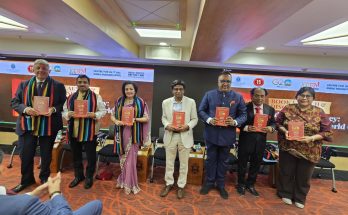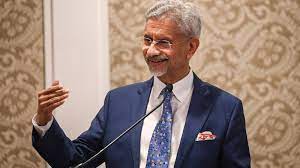 It’s a digital revolution in the making. If Prime Minister Narendra Modi’s dream of Digital India comes to fruition, the country of 1.2 billion people will be transformed radically into a formidable knowledge powerhouse connected by info highways and powered by transparent governance.
It’s a digital revolution in the making. If Prime Minister Narendra Modi’s dream of Digital India comes to fruition, the country of 1.2 billion people will be transformed radically into a formidable knowledge powerhouse connected by info highways and powered by transparent governance.
M-governance: Mobile, not Modi
Digital India initiative bears the stamp of the Indian leader, a former tea-seller who has flagged off new dreams for India and is fond of taking slefies with world leaders, but Mr Modi was keen to emphasise at the launch of the campaign in the Indian capital that it should not be equated with him. “We have to move from E-governance to M-governance. M-governance does not mean Modi governance. It means Mobile governance,” Mr Modi said in a messianic tone as he kicked off the Digital India Week in New Delhi on July 1.
Betting on Digital Revolution
Cheering him on were the crème de la crème of India’s corporate world, who have pledged Rs 450,000 (around $71 billion) for multifarious initiatives that could make India a digital powerhouse. MukeshAmbani of Reliance Industries, a late entrant to the telecom world, led the charge by pledging Rs 250,000 crore, followed by Sunil Mittal of Bharti Airtel committing Rs 100,000 crore. Kumar Mangalam Birla of Aditya Birla Group, Anil Agarwal of Vedanta Resources and Anil Ambani of ADAG were among the top five contributors to the Digital India initiative.
The pioneering experiment, among other things, seeks to connect 250,000 villages with broadband internet, promote e-governance and transform India into a connected knowledge economy by 2019.
In his speech, Mr Modi emphasised the importance of bringing a digital revolution in the country to deal with corruption, help provide efficient governance and plug the rich-poor divide. He also spoke about boosting local manufacturing of electronics, which is India’s largest import after oil.
Bridging Digital Divide
The intentions are noble and potentially revolutionary, but it promises to be an uphill journey with 900 million people in a country of 1.2 billion still without access to internet. The creaky infrastructure was evident at the venue of the launch of Digital India which saw guests fretting about poor Net connectivity.
Against this backdrop, Mr Modi underlined the need to bridge the digital divide by getting more people on the information highway and avail of a wide array of government services in the areas of health, education and social welfare through “the click of a mouse.” “If a huge section of the population is left out, then a huge calamity may befall all of us in the form of Digital divide,” Mr Modi warned.
Digital Empowerment
 Digital India aims to provide inclusive growth in electronic services, manufacturing, and provide more job opportunities. Some key innovations include the “digital locker” system, which would help citizens save all their documents and help reduce usage of physical documents along with sharing of e-documents across agencies. Other initiatives such as MyGov.in for citizen engagement in governance is seen as a game changer by many who believe it would bring about a larger say for citizens in the running of the day to day governance. E-sign framework is another initiative which would help citizens sign documents digitally online using Aadhar authentication.
Digital India aims to provide inclusive growth in electronic services, manufacturing, and provide more job opportunities. Some key innovations include the “digital locker” system, which would help citizens save all their documents and help reduce usage of physical documents along with sharing of e-documents across agencies. Other initiatives such as MyGov.in for citizen engagement in governance is seen as a game changer by many who believe it would bring about a larger say for citizens in the running of the day to day governance. E-sign framework is another initiative which would help citizens sign documents digitally online using Aadhar authentication.
The main aims of the ‘Digital India’ programme is to provide Digital Infrastructure as a utility to every citizen, Governance and services on demand, along with digital empowerment of citizens. The Digital India programme aims to provide broadband highways, universal access to mobile connectivity, public internet access programme, e-governance and reforming government through technology, eKranti.
With the right mix of a knowledge-based economy and digitally empowered citizens, along with simplifying complex processes and giving citizens a greater say in governance India is poised to grow not only just economically but also make more access to technology easily available to citizens and empower larger sections of society. By digital empowerment of the citizens, the government is also likely to be more carefully scrutinized by citizens in the running of the day to day administration. It is expected to lead to more transparency and accountability from the government.
India has a favourable demographic dividend with majority of the population below the age of 35. Providing better governance and services to this section would augur well for the growth and development of the individual citizens as well as help in the overall progress of the country. A digitally empowered India would be a force to reckon with in today’s global world and give its citizens better opportunities and access to the world at large through better connectivity.
Mr Modi-led government, since it stormed into power in May last year, has given a particular emphasis on providing mobile governance and universal phone connectivity to every Indians, and has aimed to empowering rural India and scale up investments in manufacturing and various other sectors.
Undoubtedly, the agenda of “Digital India”, once accomplished, will eradicate poverty, create industries, and jobs. But there are several challenges ahead, including India’s current average Internet speed, which was ranked at 115th globally during the first quarter of 2015.
Indian corporate honchos, such as Reliance Industries chairman MukeshAmbani and Bharti Enterprises head Sunil Bharti Mittal promised to invest over 4.5 trillion rupees ($71 billion) in Mr Modi-led “Digital India” initiative.
Other organisations, including Metals and resources company Sterlite Technologies will manufacturing LCD panels in India, while a maker of energy-saving motors Japan’s Nidec Corp, will establish 5 factories; all in India’s flagship initiative – “Digital India”.
Author Profile
- India Writes Network (www.indiawrites.org) is an emerging think tank and a media-publishing company focused on international affairs & the India Story. Centre for Global India Insights is the research arm of India Writes Network. To subscribe to India and the World, write to editor@indiawrites.org. A venture of TGII Media Private Limited, a leading media, publishing and consultancy company, IWN has carved a niche for balanced and exhaustive reporting and analysis of international affairs. Eminent personalities, politicians, diplomats, authors, strategy gurus and news-makers have contributed to India Writes Network, as also “India and the World,” a magazine focused on global affairs.
Latest entries
 DiplomacyApril 23, 2024Resetting West Asia, re-booting the world, but not fast enough: T.S. Tirumurti
DiplomacyApril 23, 2024Resetting West Asia, re-booting the world, but not fast enough: T.S. Tirumurti India and the WorldApril 22, 2024India’s G20 Legacy: Mainstreaming Africa, Global South in global agenda
India and the WorldApril 22, 2024India’s G20 Legacy: Mainstreaming Africa, Global South in global agenda DiplomacyApril 10, 2024Diplomat-author Lakshmi Puri pitches for women power at LSR
DiplomacyApril 10, 2024Diplomat-author Lakshmi Puri pitches for women power at LSR India and the WorldApril 6, 2024UN envoy pitches to take India’s solutions to the world stage
India and the WorldApril 6, 2024UN envoy pitches to take India’s solutions to the world stage







